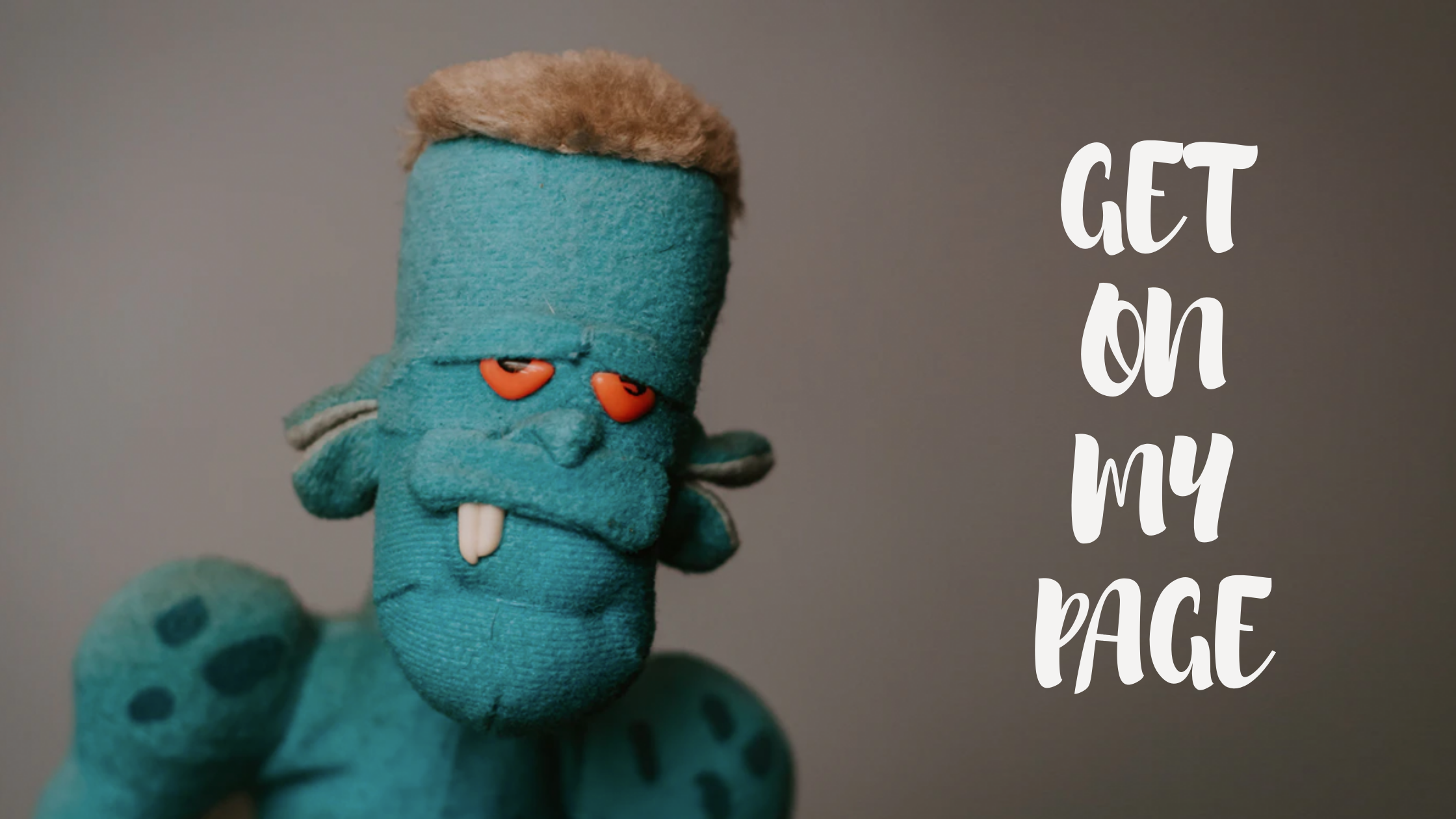Productivity is not a straight line. With each tweet, snap, or out of the blue text from “he/she-who-shall-not-named”, we go from getting things done to “what was I doing again?”. It happens, our attention is pulled in too many directions, but there are ways to get back on track, even with the same devices that derail us.
Productivity increases when we beat our biggest distractions and find the right techniques to match our daily rhythm. This article goes through 5 tips to finally get things done, without chucking your phone out the window.
1 – Plan, Planners, Or Unplanned - Find Out Which One Works Best For You
Since you’re reading this, it means you’ve got stuff to do and you need to figure out the best way to go about doing it. But before getting into the methods, how are you tracking what actually needs to be done?
Are you the type that writes every task down and gets overwhelmed? Or do you gain a sense of calm from planning out your day in pristine, 30 minute intervals?
If you’re strongly one or the other, trying to pick up the habits of your opposite may be counterproductive, so it’s important to know which one works best for you.
For example, if you’re the type that doesn’t like to plan, your journey into productivity might look like this:
You’d do a quick search for “best productivity planners” in the app store. It fetches more choices than most would care to swipe through. Then, you download a digital planner only to delete it or forget about it in some deep, hidden folder labeled “Productivity”.

Productivity vs. Feeling Busy
Fact of the matter is, planners aren’t for everybody. They aren’t one-size-fits-all. In fact, they make it easy to mistake “feeling busy” with actually getting things done.
“Productivity doesn't mean doing more work. It means working on the right things. And when you focus on one right thing after the other, you can achieve pretty much anything that's humanly possible.”
For most planners, productivity increases when they write things down. So habit trackers and digital agendas will do wonders. On the other hand, spontaneous folks may find that method draining or overcomplicated. However, unplanned does not equal unproductive. Non-planners have their own way of knocking things out. No time frames, no fancy apps.
But like most things, productivity tips aren’t black or white. Some non-planners like a little structure, and some planners might have very simple outlines. For those in the gray, this next tip may be your perfect productivity bootcamp.
2 – Play with Pomodoro
For those who enjoy structure without having to plan out their day in 30 minute intervals, the Pomodoro technique is a productivity tool worth trying. Francesco Cirillo, an inventive entrepreneur, used a tomato-shaped timer to train his brain for short bursts of focus.

Simply put, you work for a predetermined period of time and have regular, short breaks between each session. This rotation between short sprints of work and regular breaks are meant to keep you consistently productive and bolster motivation and creativity.
Use this guide to start with Pomodoro:
- Choose a task to accomplish.
- Set the Pomodoro to 25 minutes (the Pomodoro is the timer)
- Work on the task until the Pomodoro rings, then put a check on your sheet of paper
- Take a short break (5 minutes is OK)
- Every 4 Pomodoros take a longer break (usually 15-30 minutes)
Admittedly, it can be easy to forget you’re timing yourself and end up scrolling endlessly for 25 minutes instead of waiting for your 5 minute break. This is where pomodoro apps come in handy. Most of them have a “flip” feature where turning your phone face-down initiates the timer. If you pick up your phone during a “focus” period, your phone will vibrate to remind you of what you’re supposed to be doing: getting things done.
Even then, you can ignore the warning and endlessly scroll, but don’t blame Francesco Cirillo’s tomato timer (Disclaimer: your timer does not need to be tomato shaped). Productivity increases when a change in mindset unlocks maximum focus and encourages momentum. The next challenge is figuring out which tasks to focus on.
3 – Stick with “First Things, First”: Top 3 Most Important Tasks
“If you can find the hardest, most important things to do in your day, and do it first, the rest of the day will feel like you’re rolling downhill.” - a wise Grandpa
What’s worse than having a long list of things to do and feeling like you can’t get anything done?
Knocking out a bunch of things on that list and still feeling like you weren’t productive the whole day. Most of the time, this happens when we avoid the hardest tasks, which are often the most important things we have to do.
This makes the simplest productivity tool also one of the most effective. Set your day up for success by prioritizing 3 tasks. That’s it.

Can’t decide which ones? Grab a piece of paper, braindump all the things you have to do, read the list, and highlight the 3 most important ones. Paper sounds too prehistoric for your taste? Jot everything down on your phone’s native note-taking app or even text yourself the list. This is especially helpful for visual learners.
The Psychology Behind “First Things First”
The psychology behind it explains why feeling overwhelmed makes us less productive. Basically, when we cram our brains with emails, text notifications, and other distractions life throws our way, we overload it. Productivity increases when we identify overwhelm and prioritize, which is what the next section is all about.
4 – Get Past Feeling Overwhelmed and Burnt-Out
The sense of being overwhelmed is a great equalizer. Even if you’re organized enough to know exactly what needs to be done, managing a long list of things to do feels like a juggling act rather than a productive day. Because of this, planners and mental note-takers alike are susceptible to becoming overwhelmed and burnt-out.
Jess Ekstrom, author of Chasing the Bright Side, identifies burn-out as the moment our “head starts running faster than the heart,” and encourages people to “make sure your inspiration and ambition are going at the same pace.”
So, have your list, be ambitious, but if you overload yourself before you start, you’ll end up clogging your productivity pipeline. Moreover, the pressure and uncertainty combined with the feeling of not being able to get anything done leads to anxiety, which draws us back into the comfort of our daily distractions.
Limit Your Distractions
It’s human nature to avoid stress and with our devices constantly in arm’s reach, it’s easier than ever to scroll through social feeds, reply to emails, or text your friends about all the work you have to do. So if you’re struggling to focus, start with controlling your distractions.

Since exploring the app store can be a distraction in itself, be specific in your research. Look for lists of productivity apps that keep you off your phone and free to focus. From app blockers to growing digital trees in exchange for off-screen time, make sure to select the one that best fits your routine. If none of them work out, check out our article on the Best Productivity Websites, Blogs & Tips You Don't Know But Should for more ideas and vetted resources.
Once you set aside the distractions, get past the sense of being overwhelmed by emptying out the mess of concerns, tasks, and thoughts that prevent clear thinking. Luckily, it’s easy to do. Take everything that’s bothering you and write them down until you run out of things to list. By doing this, you’re moving the clutter onto a physical source that you can visualize and control. So, instead of grasping at thin air, you materialize your thoughts and manage them.
Essentially, you’re clearing up mental storage. Just like our phones notify us when we’re reaching capacity and force us to delete things, we have to do the same for our headspace.
So next time you’re overwhelmed or close to burn-out, stop what you’re doing and give yourself a chance to brain dump. You’ll find that your productivity increases when you dedicate time to let things go. Give inspiration a chance to catch up with your ambition, and, as the next section will go through, make sure to let others know about it too.
5 – Get Everyone on the Same Page
You’re making big strides by following these productivity tips, but sometimes the things that push us further away from getting things done come from those closest to us. Family, friends, and even coworkers can prevent us from focusing on our individual needs, as unintentional as it may be.
That’s why communication is vital for work-life balance. Working from home means family members being mindful of work hours and asking friends to wait until after those hours to hit you up. Ideally, they would stick to the plan, but if it doesn’t pan out, at least you gave them notice.
If you have remote coworkers that you need to communicate with, it can be overwhelming to handle correspondence from multiple places like texts, emails, and phone calls. Your individual productivity increases when you can get all those things in one place and streamline collaborative efforts.
Hero-Level Productivity with Markup Hero
For big-picture time management, project management, and the like, technology quickly goes from distraction to productivity tool. For collaborative efforts, Markup Hero speeds up your workflow without sacrificing quality.

Coworkers need your opinion on a presentation? They can use annotations to screenshot the slide, markup what they need help on, and share it directly with you. All you need to do is jump on and respond. All in one place. No need to share the file via email, write out a long explanation with detailed steps, or jump on a phone call that displaces the task you were doing before.
Need a PDF filled out? Share the PDF and use Markup Hero’s annotation tools to get it done.
Need to create compelling visuals for an upcoming article? Use the markup tools to give images an eye-catching splash of color or commentary.

MarkUp Hero makes it easy to control collaborative efforts through annotation and markup tools, quick editing features, and seamless accessibility. The more streamlined the teamwork, the faster the workflow.
It works just as well with individual projects; creators, freelancers, educators, and other independent entities use it too. At the end of the day, productivity tools should minimize distractions and maximize focus, whether it’s with a team or working solo.
Bringing It All Together
Let’s recap. We started off by figuring out which planning strategy works best (or if one is needed at all). Then, we talked about Francesco Cirillo and his tomato timer and how it became a well-known, effective productivity tool. Along with learning a few other productivity techniques, we broke down how to prioritize tasks and how to get past feeling overwhelmed. Finally, we touched on the importance of communicating with family, friends, and coworkers to streamline productivity and workflow.
Although it’s unlikely for you to read this article and be a completely changed person, at least you have the tools in place to make small, positive changes for your personal productivity.
Now that you have the knowledge, it’s time to implement! But before you set aside your phone and turn off your distractions, remember that productivity means more than finding the best journal or trying every hack known to existence. It’s about picking up the things that work for you and learning how to integrate them into your unique, daily rhythm, one task at a time.
Originally written by Lyka Ferry and posted with permission.


